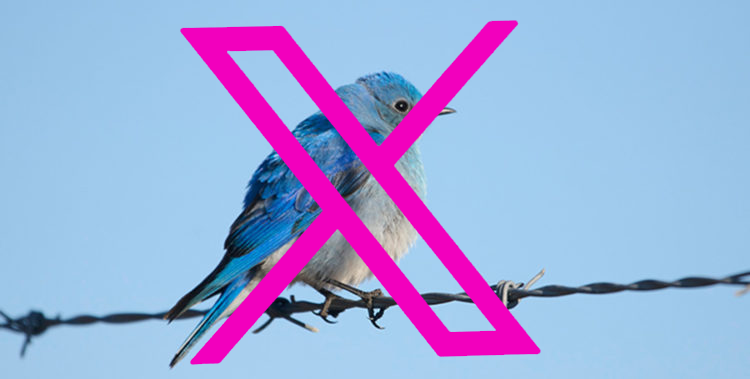Last night Elon Musk initiated a comprehensive rebranding of Twitter, or, as we’re supposed to call it now, ‘X’. This rebranding is set to transform Twitter into the long-heralded ‘everything app’. Eventually X could bring together content, social networking, shopping, banking and a whole lot more into one platform – an ambition seemingly influenced by China’s WeChat.
The advent of X is the most significant transformation since Musk acquired the social media platform for a staggering $44 billion in October last year. The new, enigmatic X logo, indicative of this metamorphosis, was unveiled by Musk and enthusiastically echoed by the company’s CEO, Linda Yaccarino, who confirmed the shift by projecting the new logo on Twitter’s headquarters in San Francisco.
Perhaps the most surprising twist in the rebranding narrative is the renaming of the platform’s primary function. Tweets, as they have been known for over a decade, are now simply ‘x’s’. And the concept of retweeting is being reconsidered entirely, Musk hinted, without providing further details. Will users lose the ability to influence amplification through this core functionality? Will we be able to choose what we see on our timelines at all, or will it all be curated through the algorithm?
Officially renamed X Corp back in April, this transition positions Twitter to embody Musk’s vision of a multi-functional app, integrating features like messaging, payments, a marketplace, and public posts. Yaccarino emphasised this strategy, identifying ‘X’ as the future of limitless interactivity.
While other tech giants are no stranger to large-scale rebranding, as we have seen with both Meta and Alphabet, neither of those cases involved reinventing their core Facebook social and Google search products.
What’s in a name? We’re about to find out.
Musk, who earlier this year launched an AI start-up called xAI, plans for this venture to work synergistically with his existing companies, including Tesla and the newly rebranded Twitter/X. This ambitious plan, however, does not come without its share of challenges.
The radical restructuring of X under Musk’s tenure has sparked both applause and critique. His ‘relaxed’ approach to moderation led to a significant dip in advertising revenue, causing the company to operate at a loss and accrue substantial debt.
Musk’s controversial policies have led some users to explore alternatives like Bluesky, backed by Twitter’s former boss Jack Dorsey, and Mastodon. Despite this, the biggest threat seems to come from Meta’s Threads app, which, despite its limitations, has become the fastest-growing app in history. The app’s similarities to Twitter have irked Musk, leading to a series of derogatory comments aimed at Meta’s owner, Mark Zuckerberg, and even threats of legal action.
The rebranding marks a new chapter for the popular social media platform. This transformation not only changes the platform’s identity but also signals a broader shift in how we perceive and interact with social media.
There appears to be a big variable – an ‘X’-factor if you will – that no-one is considering here.
What about Twitter’s users?
Do the people who use the platform want X, whatever it ends up being? And will they use it? When the social media age began twenty years ago, it did so in a vacuum. Nothing like it had been seen before. So platforms like Twitter and Facebook were able to sculpt their users in their own image.
But now the marketplace has both choice and precedent built into it. You can’t give users the tech platform, tell them they’re going to like it, and be guaranteed they’ll sit back and agree. The Metaverse is an all too fresh rebuttal of the idea that tech users are passive consumers who will work with whatever’s put in front of them.
For X to hit the spot, winning back the users and the advertisers who’ll follow them, a vision and narrative of social, personal and community value is going to have to be buried underneath it. And not too far below the surface.




